Abstract
A study of the lysis of rabbit erythrocytes by streptolysin O (SO) revealed at least two steps in the hemolytic process. The initial interaction between SO and erythrocytes is the adsorption of the toxin molecule to the cell surface. Adsorption occurred at 4 C and was independent of ionic strength and pH; these results suggest that hydrophobic interactions between SO and the cell may be important in this process. Cholesterol was shown to prevent the adsorption of toxin to the cell, and it is proposed that cholesterol in the red cell membrane may be the site of toxin adsorption. The concept of a lipid attachment site is supported by the findings that proteolytic enzymes and sulfhydryl inhibitors known to affect external erythrocyte proteins did not affect SO hemolysis. Although the number of toxin molecules that will adsorb to a cell is limited, more than one toxin molecule was required for hemolysis. The step(s) following adsorption was dependent on temperature, ionic strength, and pH. Thus, it is evident that this step(s) is readily separable from adsorption, suggesting that an ionic interaction occurs between toxin and an erythrocyte membrane molecule. The step(s) following adsorption was also inhibited by divalent cations. Since N-ethyl maleimide will also inhibit lysis after toxin adsorption, it is possible that divalent cations may prevent SO hemolysis by reacting with free sulfhydryl groups on the toxin molecule.
Full text
PDF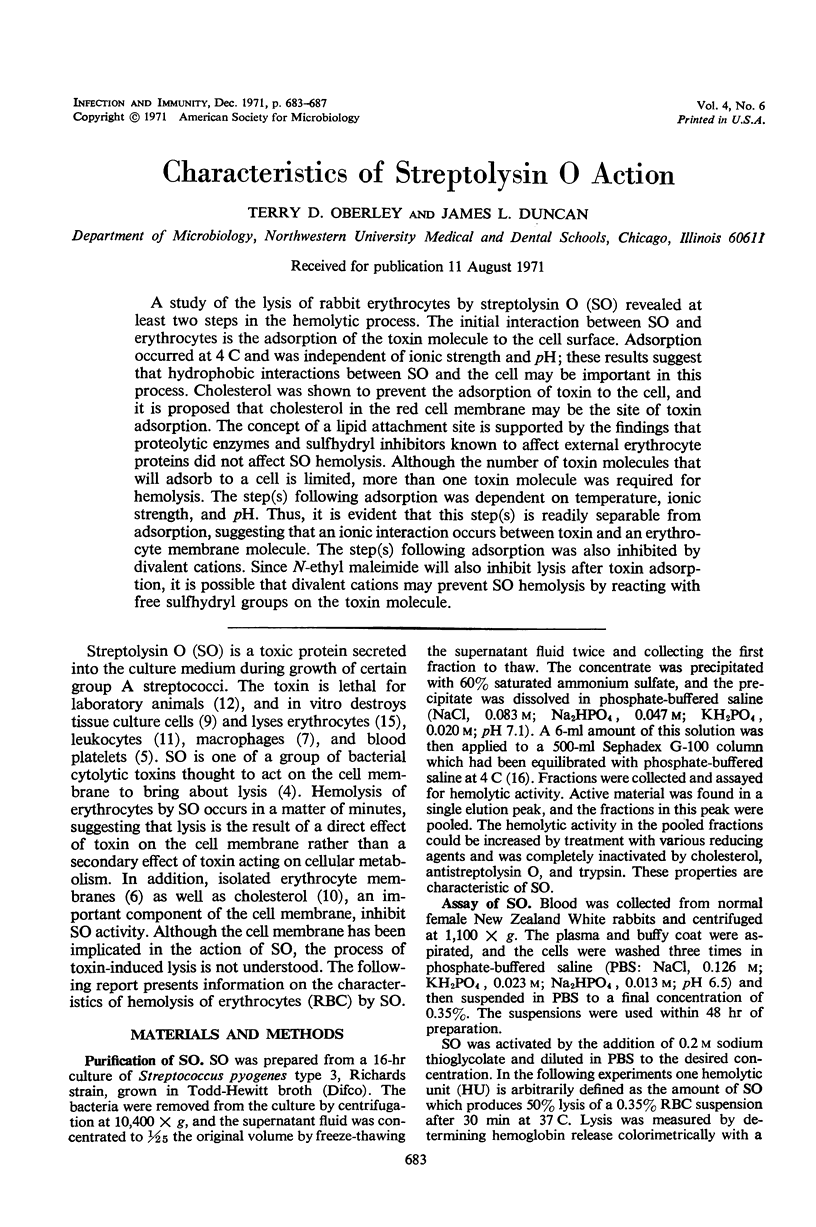
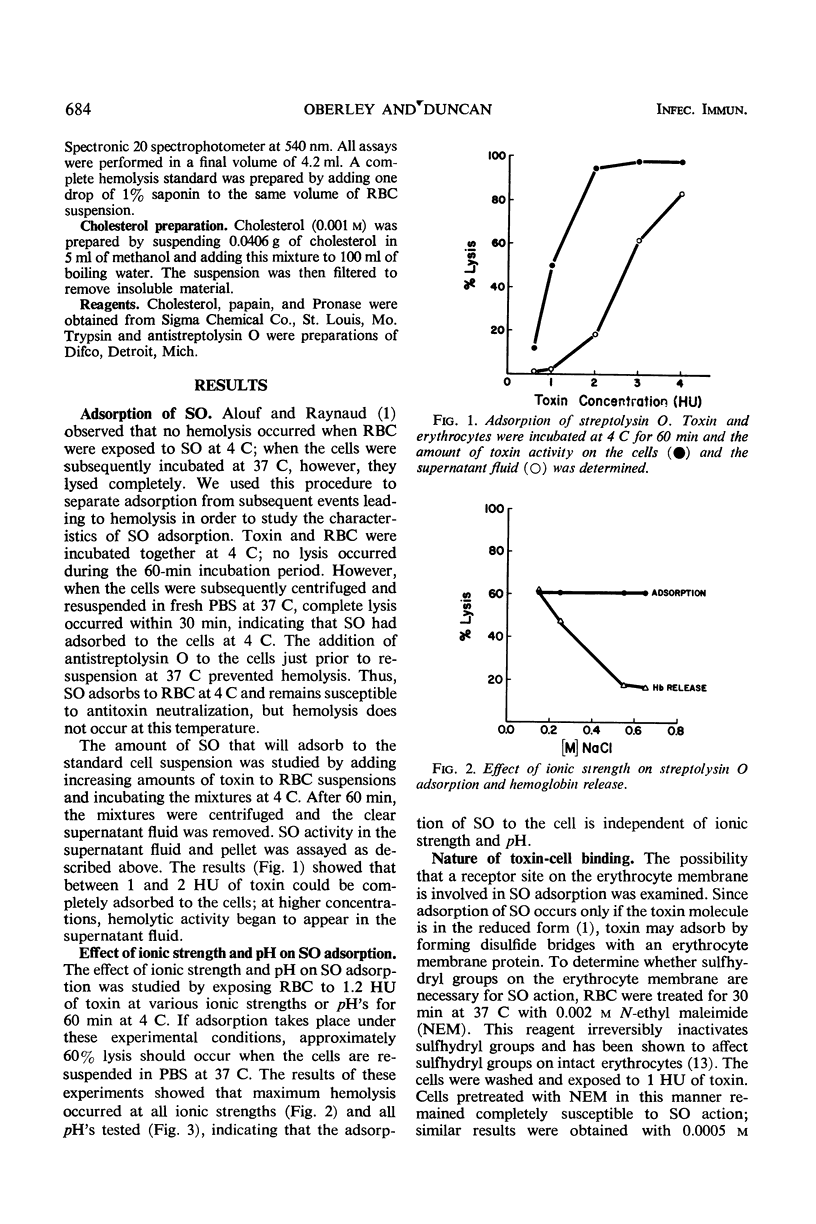
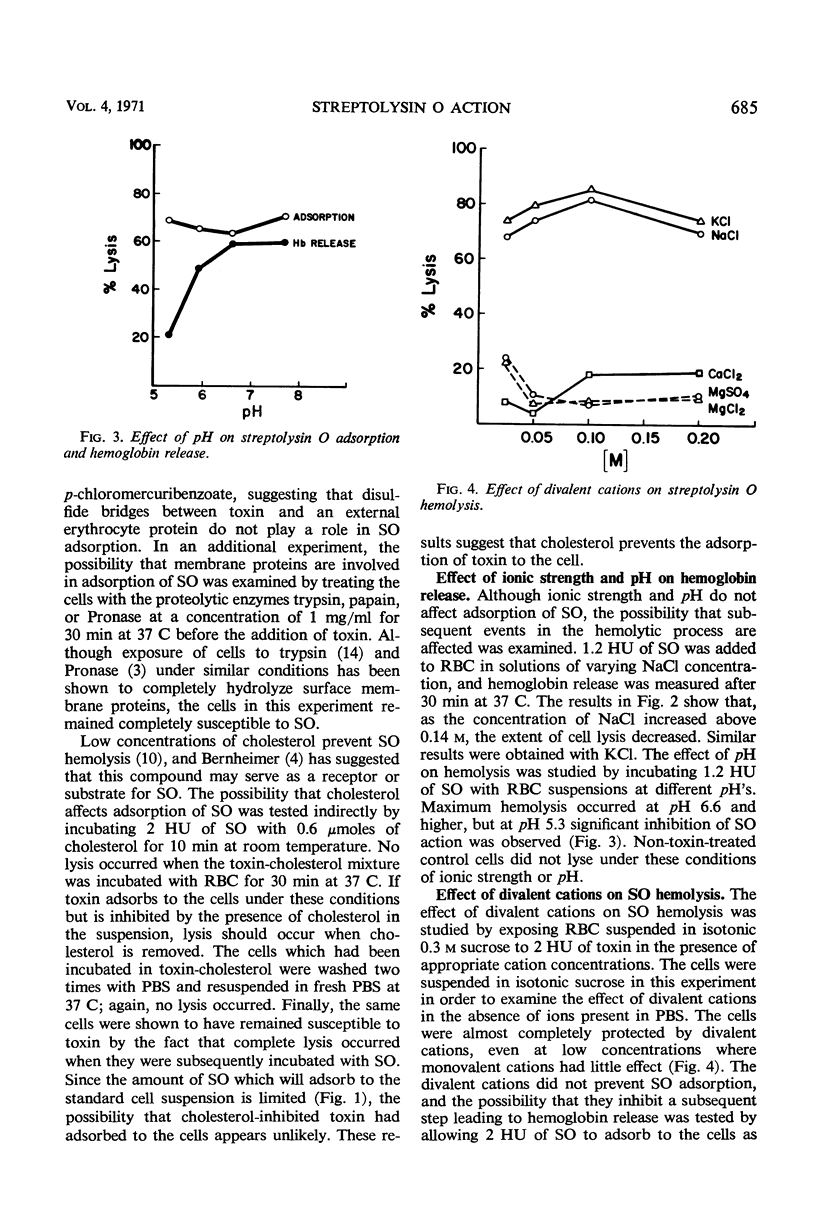
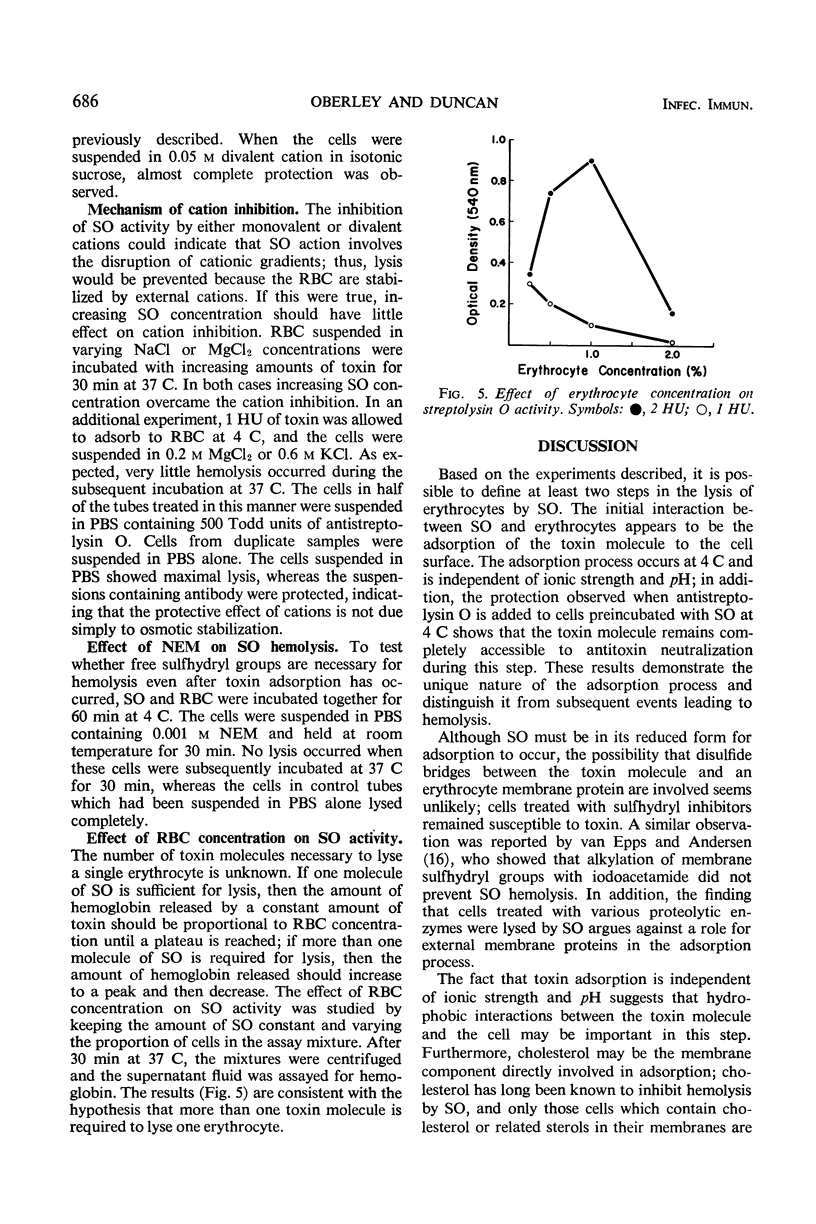
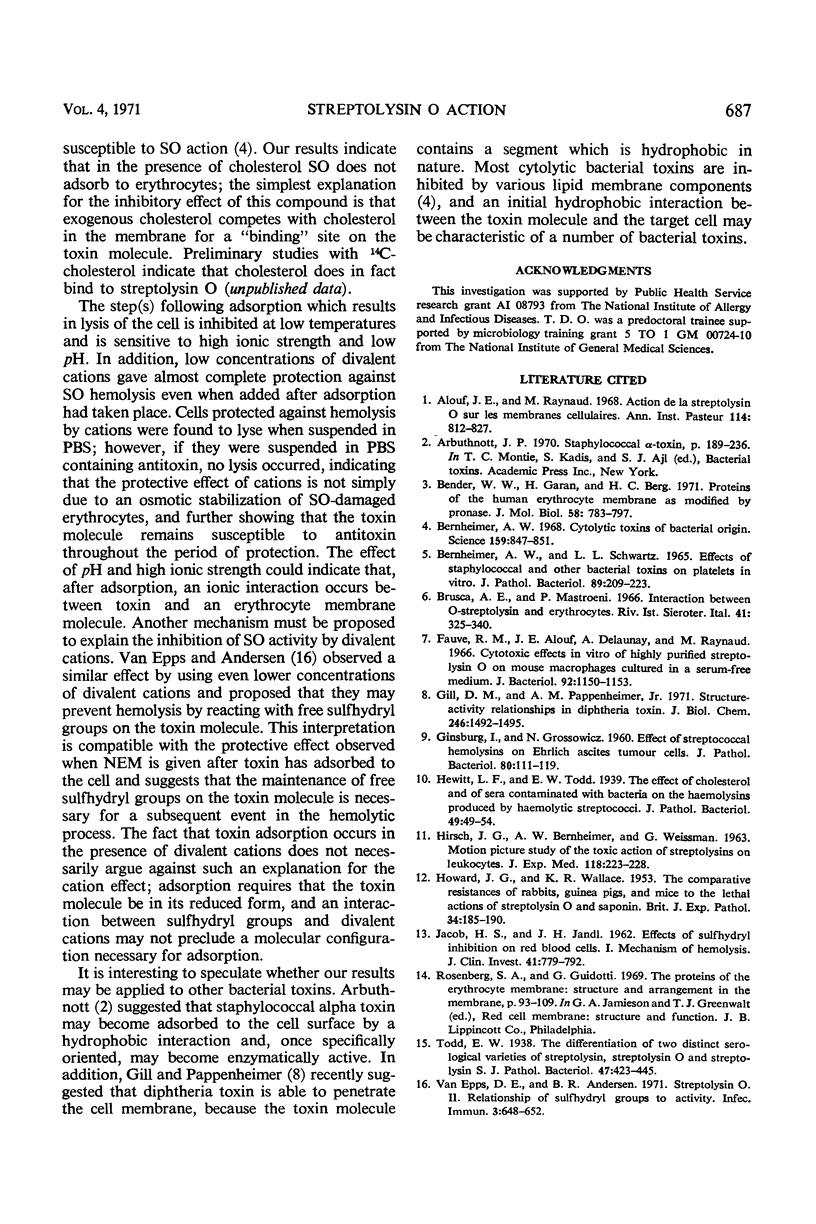
Selected References
These references are in PubMed. This may not be the complete list of references from this article.
- Alouf J. E., Raynaud M. Action de la streptolysine O sur les membranes cellulaires. I. Fixation sur la membrane érythrocytaire. Ann Inst Pasteur (Paris) 1968 Jun;114(6):812–827. [PubMed] [Google Scholar]
- BERNHEIMER A. W., SCHWARTZ L. L. EFFECT OF STAPHYLOCOCCAL AND OTHER BACTERIAL TOXINS ON PLATELETS IN VITRO. J Pathol Bacteriol. 1965 Jan;89:209–223. doi: 10.1002/path.1700890121. [DOI] [PubMed] [Google Scholar]
- Bender W. W., Garan H., Berg H. C. Proteins of the human erythrocyte membrane as modified by pronase. J Mol Biol. 1971 Jun 28;58(3):783–797. doi: 10.1016/0022-2836(71)90040-4. [DOI] [PubMed] [Google Scholar]
- Bernheimer A. W. Cytolytic toxins of bacterial origin. The nature and properties of cytolytic proteins are discussed with emphasis on staphylococcal alpha-toxin. Science. 1968 Feb 23;159(3817):847–851. doi: 10.1126/science.159.3817.847. [DOI] [PubMed] [Google Scholar]
- Brusca A. E., Mastroeni P. Interaction between O-streptolysin and erythrocytes. Riv Ist Sieroter Ital. 1966 Nov-Dec;41(6):325–340. [PubMed] [Google Scholar]
- Fuve R. M., Alouf J. E., Delaunay A., Raynaud M. Cytotoxic effects in vitro of highly purified streptolysin O on mouse macrophages cultured in a serum-free medium. J Bacteriol. 1966 Oct;92(4):1150–1153. doi: 10.1128/jb.92.4.1150-1153.1966. [DOI] [PMC free article] [PubMed] [Google Scholar]
- GINSBURG I., GROSSOWICZ N. Effect of streptococcal haemolysins on Ehrlich ascites tumour cells. J Pathol Bacteriol. 1960 Jul;80:111–119. [PubMed] [Google Scholar]
- Gill D. M., Pappenheimer A. M., Jr Structure-activity relationships in diphtheria toxin. J Biol Chem. 1971 Mar 10;246(5):1492–1495. [PubMed] [Google Scholar]
- HIRSCH J. G., BERNHEIMER A. W., WEISSMANN G. MOTION PICTURE STUDY OF THE TOXIC ACTION OF STREPTOLYSINS ON LEUCOCYTES. J Exp Med. 1963 Aug 1;118:223–228. doi: 10.1084/jem.118.2.223. [DOI] [PMC free article] [PubMed] [Google Scholar]
- HOWARD J. G., WALLACE K. R. The comparative resistances of rabbits, guinea pigs and mice to the lethal actions of streptolysin O and saponin. Br J Exp Pathol. 1953 Apr;34(2):185–190. [PMC free article] [PubMed] [Google Scholar]
- JACOB H. S., JANDL J. H. Effects of sulfhydryl inhibition on red blood cells. I. Mechanism of hemolysis. J Clin Invest. 1962 Apr;41:779–792. doi: 10.1172/JCI104536. [DOI] [PMC free article] [PubMed] [Google Scholar]
- Van Epps D. E., Andersen B. R. Streptolysin O II. Relationship of Sulfyhdryl Groups to Activity. Infect Immun. 1971 May;3(5):648–652. doi: 10.1128/iai.3.5.648-652.1971. [DOI] [PMC free article] [PubMed] [Google Scholar]


